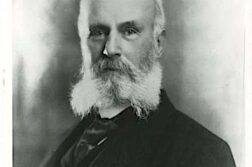Editor’s Note: A controversy that was raging in the 90’s came to be called the “lesbian sex wars,” and this piece is an entry into that debate. Two (non-gay) female writers, Catharine MacKinnon and Andrea Dworkin, had separately staked out a position that pornography was inherently exploitative of and even violent toward women, and they called for its censorship—allying themselves with leaders on the religious Right who were no friends of GLBT equality or, to say the least, sexual liberation. Here is Laura Anoniou’s response to these feminists, including her take on the newly published book by Nadine Strossen titled Defending Pornography: Free Speech, Sex, and the Fight for Women’s Rights (1995). This piece was published in the Summer 1995 issue of The Harvard Gay & Lesbian Review.
Laura Antoniou continues to write erotica for various audiences and has recently completed her first non-erotic novel, a mystery.
“If pornography is part of your sexuality, then you have no right to your sexuality.” — Catharine MacKinnon






